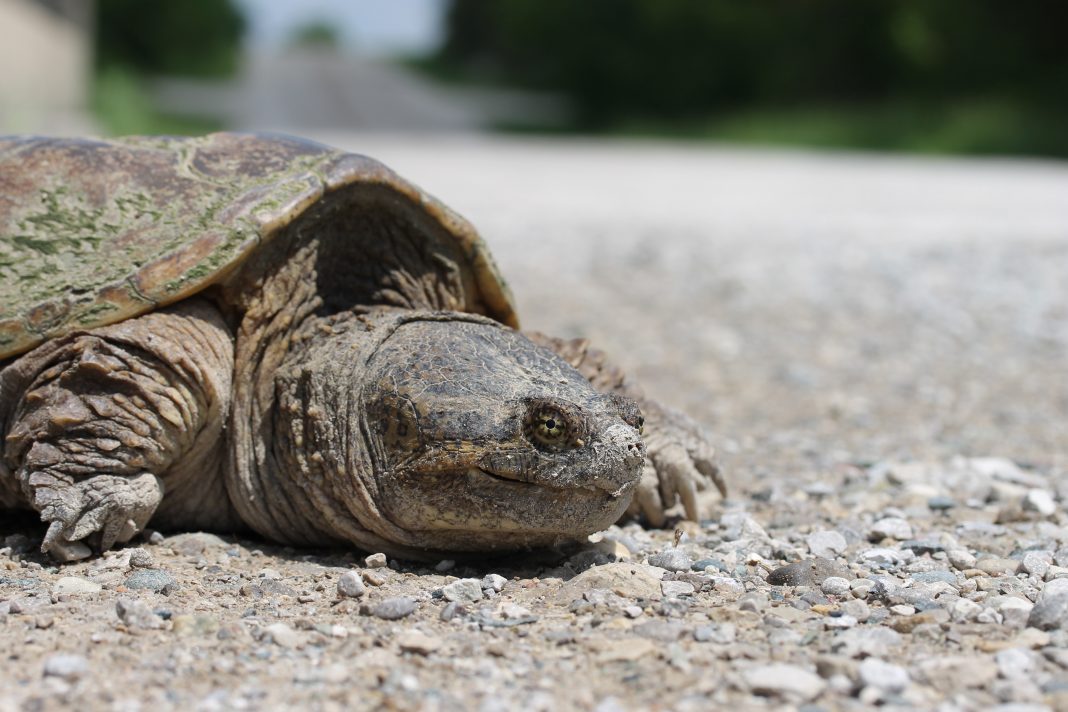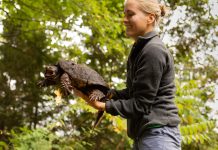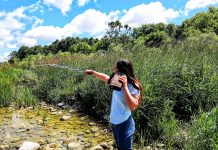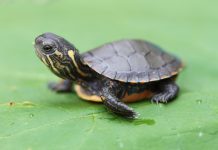Why did the Turtle Cross the Road?
Spring is one of my favourite times of year. The birds are singing, the vegetation is blooming, and baby animals are ubiquitous. Life is in the air! It is also the time of year that turtles come out of their winter hibernation, find a mate (or five), and make the trek out of the water to find a suitable place to lay their eggs. As natural habitat is continually diminishing, turtles may have to travel up to 5kms and cross dozens of roads to find a sunny patch of Earth that will incubate their precious cargo. In the process of finding a nesting spot, many are struck by cars and die. The majority of these turtles are females- the most important representatives of the population. The network of roads in southern Ontario is so extensive, no location is more than a kilometer or two from a road. As a result, road mortality is a leading cause of global turtle population decline.
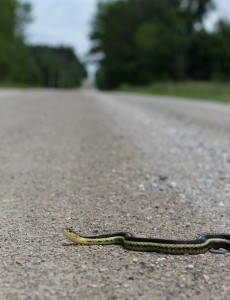
As 11 of our 17 snake species, 7 of our 8 turtle species, and our 1 lizard species are listed as ‘Species at Risk’, road mortality is a serious threat to population numbers. Many reptile species in our neighborhoods are in danger of local extinction, known as extirpation.Turtles are not the only reptile to use roads. Snakes, like turtles, need to behaviorally thermoregulate their body temperature to carry out metabolic functions, like digesting a meal or generating new skin cells. So if the ground is cold- they are cold, if they ground is warm-they are warm. Consequently, they are drawn to the warmth of asphalt and gravel roads that stay warm long after the sun has receded, especially on cool evenings. More often than people realize, they become casualties of motor vehicles.
To help mitigate reptile road mortality, the Huron Stewardship Council is in the process of erecting 12 wildlife crossing signs in 6 locations across Huron County to alert motorists at locations where there is a high density of turtles and snakes.
You can help too!
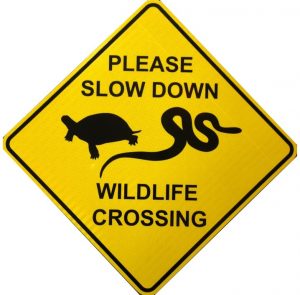 If you see a HEALTHY reptile on the road: please stop and safely help it across the road in the direction that it was heading. There is only one venomous snake in Ontario, the Massasauga Rattlesnake, and they don’t live in Huron County. The only reptile that you need to use extra caution with is the snapping turtle- always grab them by the back of the shell or push them across the road with a stick or shovel (and remember, your bite is almost twice as strong as theirs, so no risk of losing a limb!)
If you see a HEALTHY reptile on the road: please stop and safely help it across the road in the direction that it was heading. There is only one venomous snake in Ontario, the Massasauga Rattlesnake, and they don’t live in Huron County. The only reptile that you need to use extra caution with is the snapping turtle- always grab them by the back of the shell or push them across the road with a stick or shovel (and remember, your bite is almost twice as strong as theirs, so no risk of losing a limb!)
If you see an INJURED turtle on the road: please stop and put it in a box or well ventilated container with a secure lid. Note the location (road and major intersections) where the turtle was found to ensure it can be released according to provincial regulations. Do not transport turtles in water. Do not offer the turtle anything to eat.
TAKE THEM TO:
- Salthaven Wildlife Rehabilitation Center – PO Box 601, Mt Brydges, ON, N0L 1W0
519-264-2440 (they only take small turtles) - Turtle Haven – 114 Mansion St, Kitchener, ON, N2H 2J9 – 519 745-4334
- Kawartha Turtle Trauma Center- 1434 Chemong Rd #4, Peterborough, ON, K9J 6X2
705-741-5000 - Toronto Wildlife Centre- 60 Carl Hall Rd, Toronto, ON, M3K 2C1 – 416-631-0662
Even if the rehabilitation center cannot save the turtle, they may be able to save the eggs inside her! Always call first to make sure they have space.
Turtles need all the help they can get. Are you willing to be a turtle hero in your community?
– Jory Mullen, M.Sc.

